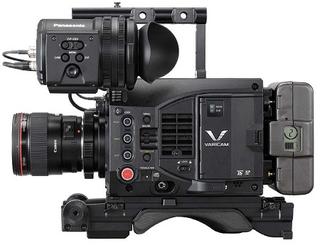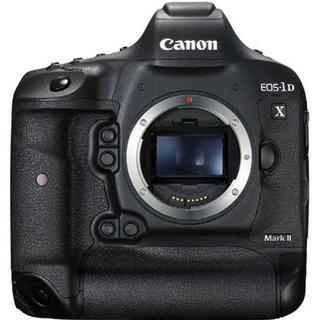Market for 4K Professional Gear Matures
LAS VEGAS—Ultra High Definition displays debuted at the CES nearly a half-dozen years ago and camera makers at NAB soon rolled out imaging products capable of capturing video that had twice the horizontal and vertical resolution of high-definition.
Now, with an ATSC 3.0 broadcasting standard a couple of years out on the horizon, broadcasters can at least start thinking about buying 4K UHD capable cameras.
Meanwhile, TV display makers have realized that increased resolution alone won’t provide as much of a difference from HD as they were capable of, so they’ve developed displays with high dynamic range that—roughly speaking—deliver detail in both the brightest and darkest parts of the image, and greater color space.
In brochure bullet points touting features of new equipment at this NAB, these advanced capabilities will be buzz-worded as HDR, Rec. 2020, and 10 bit color depth.

The ATSC will demonstrate how the next-generation ATSC 3.0 standard will support UHD at several pavilions at the NAB Show. The NAB Show will feature numerous events and sessions to foster the overall understanding of 4K and HDR. Among them is a six-session, all-day presentation on Monday, April 18, on South Korea’s Ultra HD television service (K-UHD), to be launched in 2018. The country will use the ATSC 3.0 standard for UHD and the launch will serve as a real-world test of the next-generation broadcast TV standard. Individual sessions will be presented by the Korean government and broadcast-industry leaders in room N232 of the Las Vegas Convention Center.
Speaking of ATSC 3.0, expect to view demos of UHD content at the ATSC 3.0 Broadcast Pavilion (part of the Futures Park exhibition in the east end of the LVCC’s South Hall), and the Consumer Experience area in the upper level of the LVCC South Hall.
On the morning of Wednesday, April 20, the “Ultra HD Forum Master Class,” will explore the challenges of providing highquality Ultra HD, exploring the relationship between the spectral profiles of various display technologies (e.g. CRT, CCFL, LED, OLED, Laser, Quantum Dot) and the strength of the observer metameric response. In addition, the session will suggest a set of optimized RGB primaries that maximize BT.2020 coverage while minimizing observer metamerism—a profile that quantum dots are uniquely positioned to achieve due to their spectral width and wavelength tunability.
FUTURE-PROOF
For exhibitors on the show floor, attendees can expect to see a wide array of camera and lense technology that demonstrates how far 4K has come in such a short time.
Rob Willox, director of marketing for Sony Electronics, cautions that a camera purchased today might find little immediate work where HDR is necessary, so a camera currently must be ready “for HD now, 4K later, and 4K HDR at some point,” adding that this factor “has been taken into account with our HDC-4300 camera that we introduced last NAB.”

Panasonic 4K Super 35 VariCam LT At the 2015 NAB Show, Panasonic had an existing VariCam 35 4K cinema camera delivering 14+ stops of dynamic range. At the company’s booth this year, Panasonic will roll out the 4K Super 35 VariCam LT, with reductions in weight, size and price.
Late last year Grass Valley announced that owners of its LDX 86 Series 4K cameras could install an eXtended Dynamic Range (XDR) software upgrade to take advantage of the contrast, dynamic range and color space capabilities that its Xensium-FT CMOS imagers can deliver.
“It’s not just about higher resolution, but the quality and depth of each individual pixel as well,” said Mike Cronk, senior vice president of strategic marketing for Grass Valley. “With XDR support in our LDX 86 series cameras, our customers can be future-ready to deliver incredible imagery, even as UHD and high dynamic range programming moves to the mainstream.”
GOING FURTHER
Though 4K productions have few who presently can view their shows in full resolution, that hasn’t stopped Japanese public broadcaster Nippon Hoso Kyokai (NHK), from moving on to 8K. To do that, the company enlisted the help of Ikegami, which put together an 8K mobile unit, according to Alan Keil vice president and director of engineering for Ikegami. “It made its debut at the most recent Super Bowl, and now it’s en route to Brazil,” he said. Plans are to transmit 8K coverage of the 2016 Olympic Summer Games and documentaries back to Japan. NHK anticipates it will broadcast 8K in Japan by 2020, in time for the Tokyo Summer Games.

Hitachi will showcase the fourth-generation SK/UHD8060 8K single Super 35 sensor camera at the NAB Show. Keil noted that Ikegami now has a commercially available 8K camera, the SHK-810, utilizing a Super 35 imager. “And we do anticipate that will improve, and presumably go back to three sensors at some point in the not-too-distant future,” he said.
Hitachi Kokusai also will be showcasing an established 8K camera, the SK/UHD8060 single Super 35 sensor camera. Hitachi’s fourth-generation 8K camera, it outputs in 4K, 8K, and three flavors of HD (1080P, 1080i and 720P) simultaneously.
Though JVC Kenwood won’t be debuting a new 4K camera at this NAB, they are making available a firmware upgrade for its GY-LS300 single Super 35 sensor 4K camera that will enable 120 fps recording. The camera also boasts JVC Log gamma setting, which expands dynamic range by 800 percent with film-like latitude.
The CION 4K/UltraHD production camera from AJA enables shooting in direct to edit-ready Apple ProRes 4444 at up to 4K 30fps, ProRes 422 at up to 4K 60fps, or can output AJA Raw at up to 4K 120fps. CION provides extensive Gamma modes that offer the flexibility to capture the scene exactly as lit in Normal, Normal Expanded or Video Gamma modes.
Blackmagic Design holds its new product announcements until the opening day of the show, according to Bob Caniglia, Blackmagic Design senior regional manager for eastern North America. But he did note that on the previously introduced Micro Studio HD/4K camera, a new B4 Lens Adapter will give the camera the ability to mount B4 lenses, designed for 2/3-inch imagers. “Then the 4K and 4.6K models will have the ability to take the connector from one of those lenses—those 2/3 lenses—to feed them power, and then of course there’s the ability to control it with the Blackmagic ATEM switcher.”

Canon’s new EOS-1D X Mark II HDSLR Canon will showcase advances on its new EOS-1D X Mark II HDSLR flagship, featuring a new 20.2 megapixel 35mm Full Frame Canon CMOS sensor and Dual DIGIC 6+ Image Processors. The company will also highlight its multipurpose ME20FSH, delivering full HD images at an ISO sensitivity of more than 4,000,000.
MEANWHILE IN LENSES…
Delivering a large contrast ratio, high dynamic range and expanded color space takes more than just an HDR camera. Lenses deliver the image to the camera.
“A lot of this high dynamic range and contrast has to do with the coating that we have,” said Thom Calabro, director marketing and product development at Fujifilm Optical Devices Division. “It’s also the mechanical, the internals of the lens which reduces flare and that improves the contrast.”
Fujifilm will debut the Fujinon 4K Ultra HD Series, designed to be coupled with 4K 2/3-inch cameras to produce the same focal length range DP’s and camera operators have come to expect with HD, but at a much higher resolution, contrast, and dynamic range.
Canon will debut the CJ12ex4.3B portable 4K 2/3-inch broadcast lens, the first 4K wide-angle lens for use with 4K broadcast cameras employing 2/3-inch sensors. It is the first in a new line of 4K broadcast lenses intended to support a range of 4K ultra-high-definition productions.
It seems nothing impressive in the television world comes without some sort of penalty to be paid in terms of bandwidth, and 4K is no exception. So when talking with providers of cables and connectors, expect to hear about improvements they’ve made to pass these signals from the cameras through the rest of the production process.
Get the TV Tech Newsletter
The professional video industry's #1 source for news, trends and product and tech information. Sign up below.
